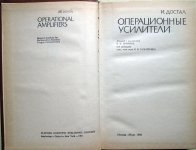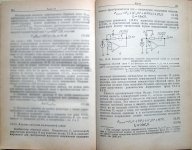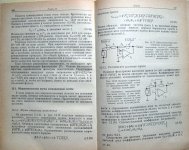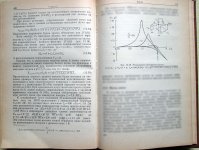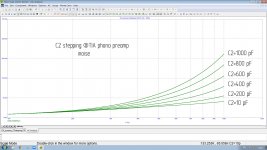I almost agree with this. But then what are the assurances of all cartridge manufacturers that "47 k input dampens mechanical resonance"? It looks like they lied to us all from the very beginning 🤔Shorting the winding will not affect the movement of the needle in any way.
Did anyone ever claim that a 47 kohm load resistance damps mechanical resonances? That's something very different from claiming that the response with a given recommended load is flat within +/- so many dB up to some frequency or other.I almost agree with this. But then what are the assurances of all cartridge manufacturers that "47 k input dampens mechanical resonance"? It looks like they lied to us all from the very beginning 🤔
(By the way, to dampen is to make slightly wet.)
I don't know in what thread that was, I'm not even entirely sure it was Bill.I trust his messages, but please specify where exactly this message is
Why is that?But in addition to the capacitance, the long cables also add interference with pickups; however, here the virtual earth will also give a positive effect.
Thank you! Corrections like this are very important to me. I more or less understand technical English, but the forum is very difficult to read, there are a lot of unknown words.(By the way, to dampen is to make slightly wet.)
I asked where is the best place to discuss TIA. But Nick Sukhov offered to discuss it right here.Maybe Leoniv should just request for a topic split and have its own line of reasoning cause I consider his preamp a completely different animal.
Your attached photo shows the noise mostly below 100 hz which is completely wrong again unless you have -12db rumble from the turntable and no PSRR in the phono preamp itself. That's highly unrealistic.
Compare my measurements with this not mine https://www.diyaudio.com/community/threads/mechanical-resonance-in-mms.303389/post-7061674
It is also absolutely real and almost identical with mine.
Capacitive cable pickups I expect to be better shorted/suppressed to virtual ground than to high ohm input.Why is that?
But then what are the assurances of all cartridge manufacturers that "47 k input dampens mechanical resonance"? It looks like they lied to us all from the very beginning 🤔
47 kOhm damps electrical resonance. No one is talking about mechanical. Or is someone talking?
Another thing, when it comes to TIA, is sometimes attributed to it the property of damping mechanical resonance. For example, the patent US4470020A says: "By presenting a relatively low load impedance to the phono cartridge, the preamplifier effectively damps mechanical resonances of the stylus-cartridge". I think this is not a lie, but a delusion of the author.
the long cables also add interference with pickups; however, here the virtual earth will also give a positive effect.
If we simulate a noise source with some capacitive coupling to the input of the amplifier, then the noise level at the output will be exactly the same for a conventional amplifier and TIA.
Yes, it is also interesting for me as I am working now and on my MMpreamp project.I asked where is the best place to discuss TIA. But Nick Sukhov offered to discuss it right here.
I think you are right and I was wrong, - TIA has lower input resistance but higher current sensitivity.If we simulate a noise source with some capacitive coupling to the input of the amplifier, then the noise level at the output will be exactly the same for a conventional amplifier and TIA.
it wasn't me but was on a thread I started. I do have a transamp MM stage to prove it works in practice (at least on a very limited number of cartidges). But the maths shows a cartridge to be horribly inefficient and tests done on shorting one channel of an MM by Gpapag show no change to the other channel and a 5V drive signal produced no movement, so I think we can mark cartridges as impossible to damp electrically.I trust his messages, but please specify where exactly this message is
I've never seen that assurance to be honest and some work being done in the background indicates that you can model the mechanical and electrical parts of a cartridge independently. Up until now both the mechanical and electrical models have been a bit limited.But then what are the assurances of all cartridge manufacturers that "47 k input dampens mechanical resonance"? It looks like they lied to us all from the very beginning 🤔
this is an excellent conclusion in order not to worry about an increase (or decrease, as in TIA) of the load resistance of an MM cartridge relative to the "standard 47 kOhm", i.e. In what follows, we take into account only electrical resonanceso I think we can mark cartridges as impossible to damp electrically.

What exactly? The moving system has a very weak connection with the coils and does not feel what is happening to them. For example, a short circuit of the coil of one channel does not affect the behavior of another in any way.That's illogical.
There is one more disadvantage of TIA method of long cable capacitance elimination. It is summing point capacitance (Cx) noise gain. I attach pages from Jiri Dostal`s book "Operational Amlifiers" (you can also read English original @ google books) - his Cx is C1 in your circiut and C2 in my Microcap cir-file as parasitic cable capacitance. I modeled the Cx stepping and got not such a deplorable result as in Jiri Dostal`s Fig.12.19, but now it is clear that TIA is not a panacea for suppressing the negative effects of the capacitance of long cables. Minimizing the input capacitance is much better from any point of view. IMHOYes, this is a serious disadvantage of the transimpedance amplifier, and the reason why it has not become popular.
Attachments
If you mean continuing to use the input LCR for possible partial compensation of the mechanical resonance that may exist in some not entirely successful MM cartridges (but absent in most modern MM cartridges and all MCs), then I probably agree. But if I found a mechanical resonance in my MM cartridge, then I would not suffer, but simply throw away such a device.That's illogical.
Last edited:
Yes, the presence of parasitic capacitance at the input will increase the noise gain at high frequencies. But in this case, a wide band is not required, it can be limited to 20 kHz. Therefore, it is possible to include a capacitance in the feedback circuit to neutralize the input parasitic capacitance. In real conditions, the cable capacitance does not exceed 200 pF, this does not lead to a critical increase in noise.There is one more disadvantage of TIA method of long cable capacitance elimination. It is summing point capacitance (Cx) noise gain.
Yes, I think the possible way of partially compensate this negative fenomena is to adjust NFB capacitor of first opamp (C2 || R1 in your circuit). But it is also adjustment for specific length and type of cable.Yes, the presence of parasitic capacitance at the input will increase the noise gain at high frequencies. But in this case, a wide band is not required, it can be limited to 20 kHz. Therefore, it is possible to include a capacitance in the feedback circuit to neutralize the input parasitic capacitance. In real conditions, the cable capacitance does not exceed 200 pF, this does not lead to a critical increase in noise.
- Home
- Vendor's Bazaar
- Nick Sukhov SU-XXI MM Phono stage -85 dBA SN ratio...
